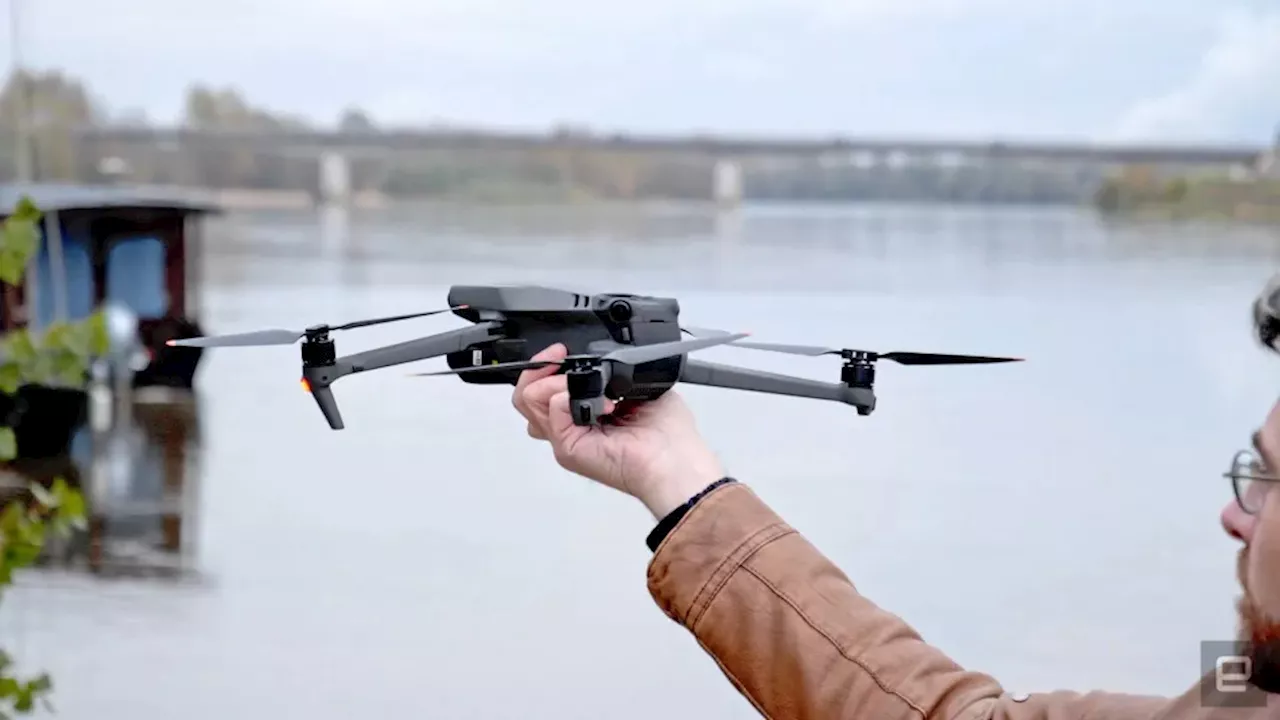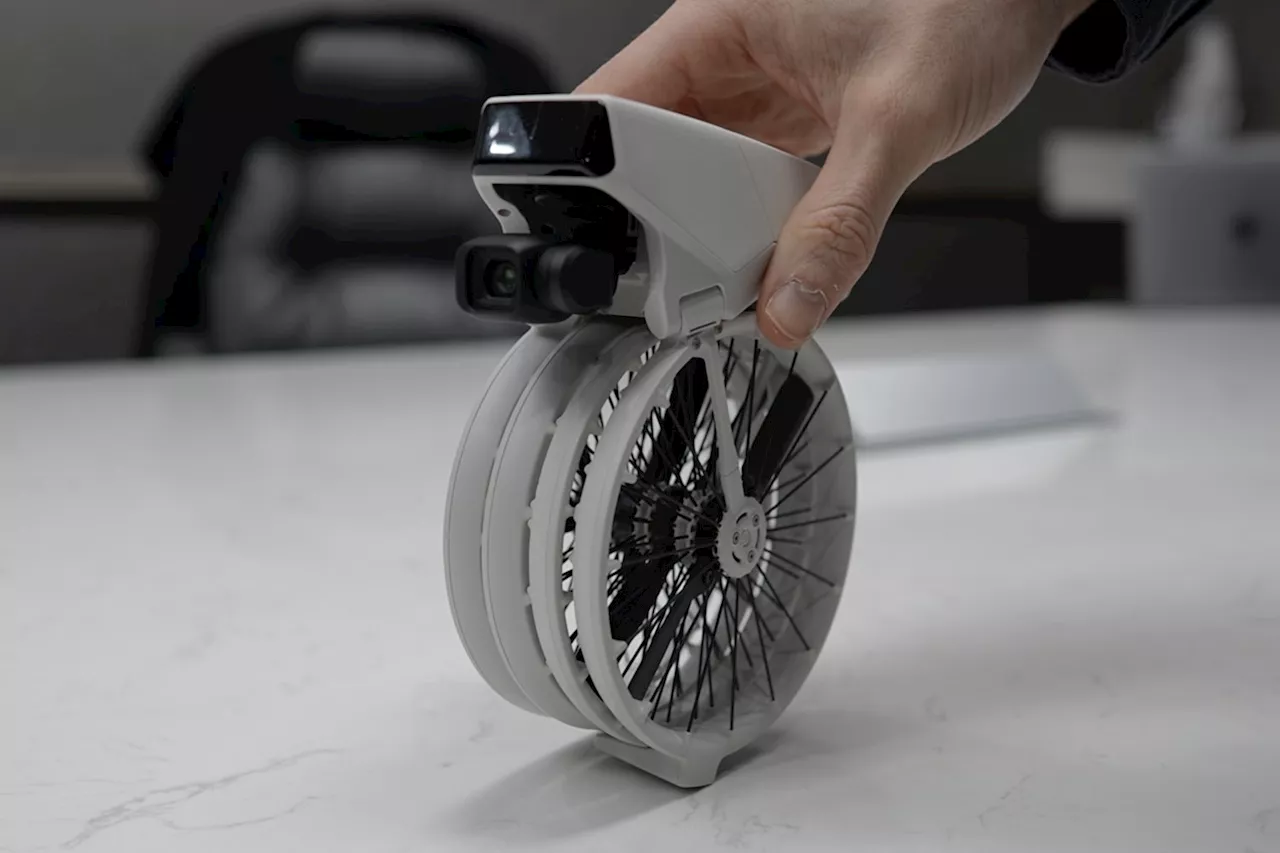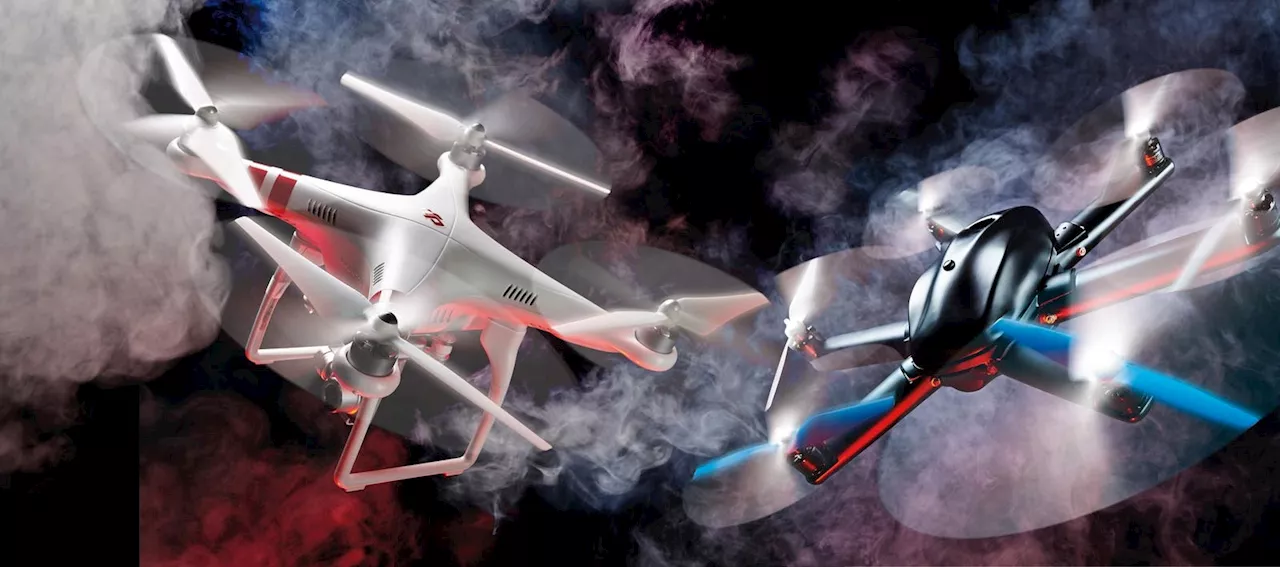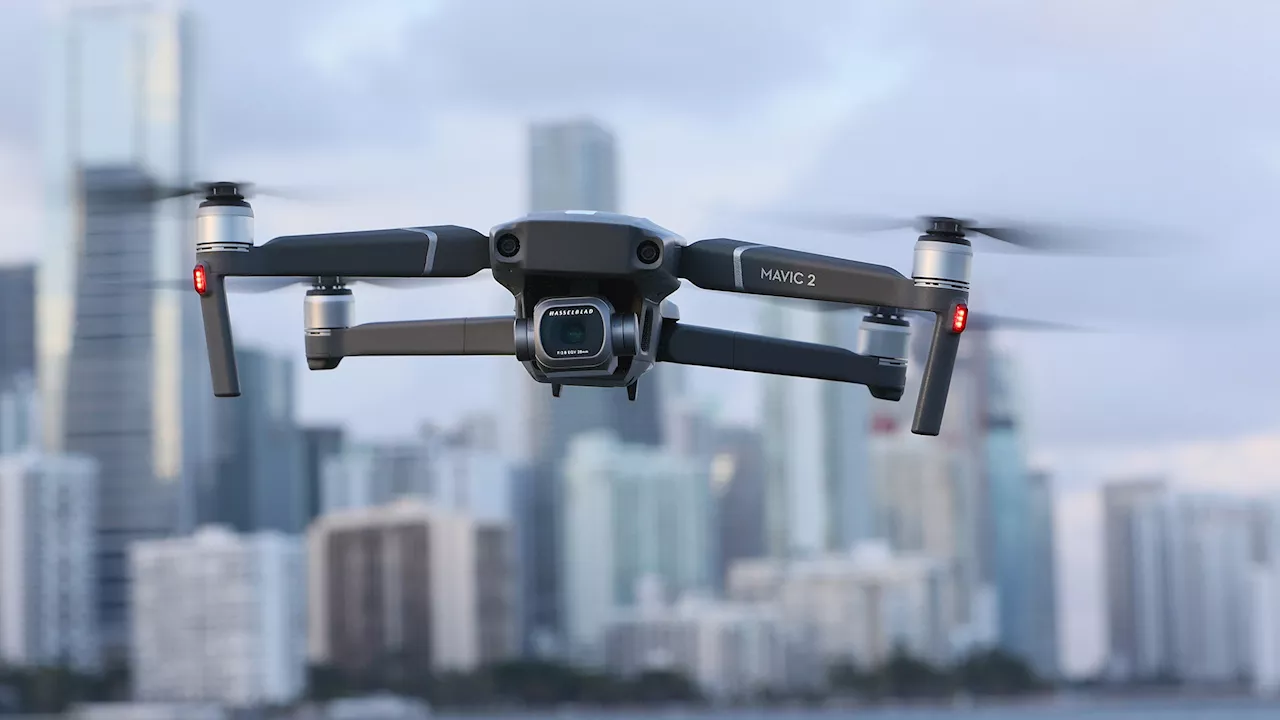DJI, the world's leading drone manufacturer, has announced the removal of its 'No Fly Zone' geofences in restricted areas. This change, while intended to empower users, could lead to more drones operating in potentially dangerous airspace, exacerbating existing anxieties surrounding unidentified flying objects (UFOs) and drone sightings. Despite the FAA's guidelines and regulations, DJI’s decision places the ultimate responsibility on drone operators to avoid restricted areas, raising concerns about potential misuse and security risks.
This week DJI , the world’s leading drone manufacturer, announced a new policy removing enforcement of its “ No Fly Zone ” geofences in restricted areas. The sudden shift may lead to more drones hovering where they shouldn’t, which could worsen a lingering national panic over flying objects in the sky. DJI , the China-based drone giant, says it will no longer enforce geofence barriers that prevent its products from flying over restricted areas like airports, wildfires, and government buildings.
Though the company says these changes are intended to empower its users, they come amid a surge in drone sightings, some around critical infrastructure, that have stoked fears and fueled a growing tide of conspiracy theories.DJI’s changes mean operators will have one less guardrail preventing them from flying into risky areas. The drone dama might not be going away anytime soon. DJI won’t stop drones from flying over hospitals and wildfires. DJI caused a brief panic in 2015 after a drone operator crash-landed one of its Phantom FC40 on the White House lawn. Backlash to that event led DJI to implement geofenced “No Fly Zones” around hospitals, government buildings, and other critical zones. As part of those changes, DJI prohibited its drones from taking off in restricted zones. Drones that flew near the boundary of those areas would be forced to automatically decelerate and then hover in place. The voluntary restrictions were an effort by DJI to prevent its users from accidentally flying into sensitive areas where they could potentially interfere with critical services. That’s changing. In a blog post published this week, DJI said it was doing away with geofenced No Fly Zones and replacing them with “enhanced warning zones,” maintained by the Federal Aviation Administration. Drone operators using DJI Fly and Pilot apps will now receive an in-app alert notifying them if they are approaching an FAA-designated controlled airspace. Operators can choose to ignore those alerts. Crucially, it will now be left in the hands of the operators to decide whether or not they will avoid the area. DJI says it’s removing the geofences to place more control back in the hands of its operators and put its policies in line with regulatory principles “of the operator bearing final responsibility.” The company claims it implemented No Fly Zones “help foster responsible flight practices” during a period where drones were less common and regulatory environments surrounding their use were still being flushed out. Now, according to DJI, regulations both in the US and the EU have made the boundaries considered controlled airspace more clear. DJI did not immediately respond to our request for comment but defended the change in statements sent to The Verge on Tuesday. “This GEO update aligns with the principle advanced by aviation regulators around the globe—including the FAA—that the operator is responsible for complying with rules,” DJI told The Verge. In a statement sent to Popular Science, the FAA said the agency does not require geofencing from drone manufacturers. Individual drone operators are required to obtain proper airspace authorization and comply with regulations. “Generally speaking, it is legal to fly a drone in most locations if you’re operating under 400 feet, but there are rules—including passing pilot safety tests, keeping the drone in sight, avoiding all other aircraft, not causing a hazard to any people or property, and avoiding restricted airspace,” the FAA said. Geofence removals could further stoke drone panic By giving users the final call on where drones can ultimately operate, DJI is potentially absolving itself of blame or responsibility if one of its products ends up somewhere it’s not supposed to be. But it also might increase the odds of that very scenario taking place with more frequency. In December, the Department of Homeland Security, FBI, FAA, and the Department of Defense issued a joint statement saying they had received over 5,000 alleged drone sightings in a matter of weeks. Those sightings were part of a broader phenomenon, fueled by social media, where Americans claimed to be seeing objects in the sky everywhere they looked. Some narratives suggested these odd flying objects were actually advanced military aircraft or possibly even signs of extraterrestrial life. In reality, many of these supposed sightings may have actually been commercial planes, satellites, and planets misidentified as UAPs. But there were also undoubtedly consumer hobbyist drones flooding the skies, some of which appear to have crossed into restricted airspace. Citing these cases, the FAA on December 20 said it was temporarily restricting drones from flying overhead 51 utility sites spread out across New Jersey and New Yor
DRONES DJI NO FLY ZONE FAA REGULATIONS AIRSPACE SECURITY UNIDENTIFIED FLYING OBJECTS
United States Latest News, United States Headlines
Similar News:You can also read news stories similar to this one that we have collected from other news sources.
 DJI Removes Geofencing Restrictions in the US, Shifting Responsibility to Drone OperatorsDJI has lifted its geofence that previously prevented drone flights over restricted areas in the US, such as nuclear power plants, airports, and wildfires. As of January 13th, these areas will be designated as 'enhanced warning zones' and while DJI's Fly app will issue warnings, users will no longer be automatically prevented from flying within them. This change places the responsibility of ensuring safe and legal flights squarely on the drone operators, in line with FAA regulations.
DJI Removes Geofencing Restrictions in the US, Shifting Responsibility to Drone OperatorsDJI has lifted its geofence that previously prevented drone flights over restricted areas in the US, such as nuclear power plants, airports, and wildfires. As of January 13th, these areas will be designated as 'enhanced warning zones' and while DJI's Fly app will issue warnings, users will no longer be automatically prevented from flying within them. This change places the responsibility of ensuring safe and legal flights squarely on the drone operators, in line with FAA regulations.
Read more »
![]() DJI Announces Flip: The Consumer Drone with Mini 4K PerformanceDJI introduces the Flip, a compact drone designed for ease of use and impressive image quality. Combining features from the Neo and Mini 4K, the Flip boasts a larger sensor, 48-megapixel photos, 4K HDR video at 60fps, and intelligent shooting modes. It also features foldable propeller guards, automatic braking, and up to 31 minutes of flight time.
DJI Announces Flip: The Consumer Drone with Mini 4K PerformanceDJI introduces the Flip, a compact drone designed for ease of use and impressive image quality. Combining features from the Neo and Mini 4K, the Flip boasts a larger sensor, 48-megapixel photos, 4K HDR video at 60fps, and intelligent shooting modes. It also features foldable propeller guards, automatic braking, and up to 31 minutes of flight time.
Read more »
 DJI Flip: A Cute and Capable Mini DroneThe DJI Flip is a new pocket-sized drone that packs a punch with its 48MP camera and 4K, 60 FPS video recording capabilities. While it's not as light as the Neo, it offers better stability and longer battery life. But it's not without its quirks, like its struggle to stand upright.
DJI Flip: A Cute and Capable Mini DroneThe DJI Flip is a new pocket-sized drone that packs a punch with its 48MP camera and 4K, 60 FPS video recording capabilities. While it's not as light as the Neo, it offers better stability and longer battery life. But it's not without its quirks, like its struggle to stand upright.
Read more »
 DJI's Flip Drone: A Lightweight and Affordable Option for Beginners and ProsThe DJI Flip is a new drone that folds in a unique downward direction to accommodate its large propellers. It offers a variety of features, including a large sensor, 4K 100p video recording, safety features, and a three-axis gimbal. The drone is lightweight and designed for both beginners and experienced users.
DJI's Flip Drone: A Lightweight and Affordable Option for Beginners and ProsThe DJI Flip is a new drone that folds in a unique downward direction to accommodate its large propellers. It offers a variety of features, including a large sensor, 4K 100p video recording, safety features, and a three-axis gimbal. The drone is lightweight and designed for both beginners and experienced users.
Read more »
![]() DJI Introduces O4 Air Unit Series for Enhanced FPV Drone FootageDJI unveils the O4 Air Unit Series, a digital video transmission solution designed for first-person view (FPV) drone enthusiasts and content creators. The series comprises two models: the standard O4 Air Unit and the Pro version, boasting improved imaging capabilities. The O4 Air Unit Pro features a larger sensor, 4K/120p video recording, 10-bit D-Log M color mode, and an ultra-wide lens, enabling cinematic visuals. This module transmits video to FPV goggles, replacing traditional action camera setups.
DJI Introduces O4 Air Unit Series for Enhanced FPV Drone FootageDJI unveils the O4 Air Unit Series, a digital video transmission solution designed for first-person view (FPV) drone enthusiasts and content creators. The series comprises two models: the standard O4 Air Unit and the Pro version, boasting improved imaging capabilities. The O4 Air Unit Pro features a larger sensor, 4K/120p video recording, 10-bit D-Log M color mode, and an ultra-wide lens, enabling cinematic visuals. This module transmits video to FPV goggles, replacing traditional action camera setups.
Read more »
 DJI Dominates the US Drone MarketThis article discusses the dominance of DJI, a Chinese company, in the US drone market. It highlights how DJI outcompeted major US companies and became the leading provider of both hobby and commercial drones. The article also explores the potential implications of restricting DJI's access to the US market.
DJI Dominates the US Drone MarketThis article discusses the dominance of DJI, a Chinese company, in the US drone market. It highlights how DJI outcompeted major US companies and became the leading provider of both hobby and commercial drones. The article also explores the potential implications of restricting DJI's access to the US market.
Read more »
